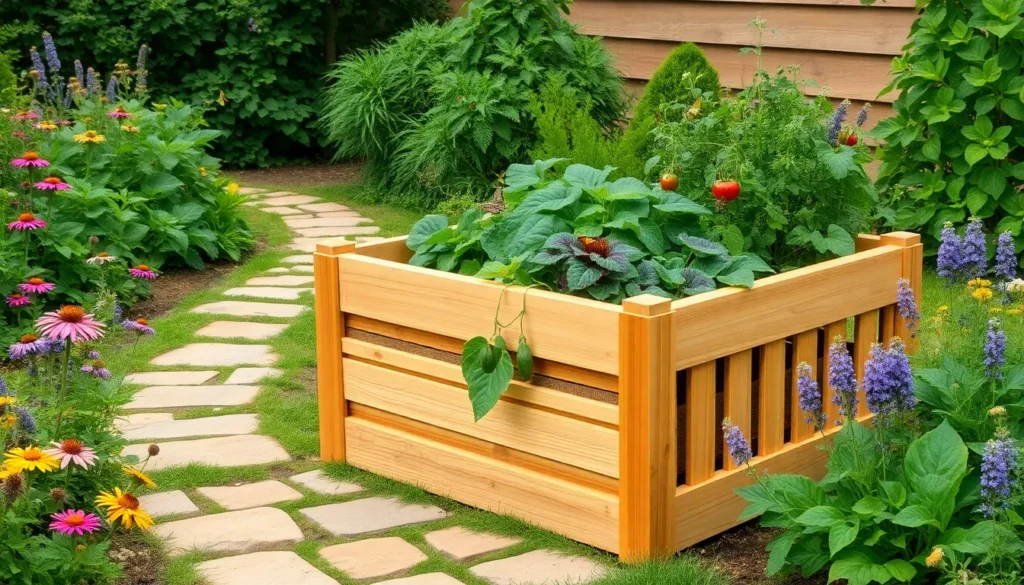Gardening is more than just a hobby; it’s a journey into a world of growth, creativity, and the simple joy of nurturing life. Whether you’re just planting your first seeds or have years of experience in the dirt, building a raised garden bed can transform your gardening experience, making it more accessible, organized, and productive. With our guide, “Top 10 Building A Raised Garden Bed,” you’ll uncover a treasure trove of design ideas that will inspire and equip you to create your very own garden paradise.
In this guide, we’ll explore innovative ways to construct raised beds that suit any space, from sprawling backyards to cozy balconies. These carefully curated techniques are designed to maximize your garden’s potential, offering practical benefits like improved drainage, better pest control, and enhanced soil quality. By the end of this journey, you’ll feel confident and excited to dig in, ready to cultivate a thriving garden that brings beauty and bounty to your home.
Cedar Lumber (Durable and Rot-Resistant)
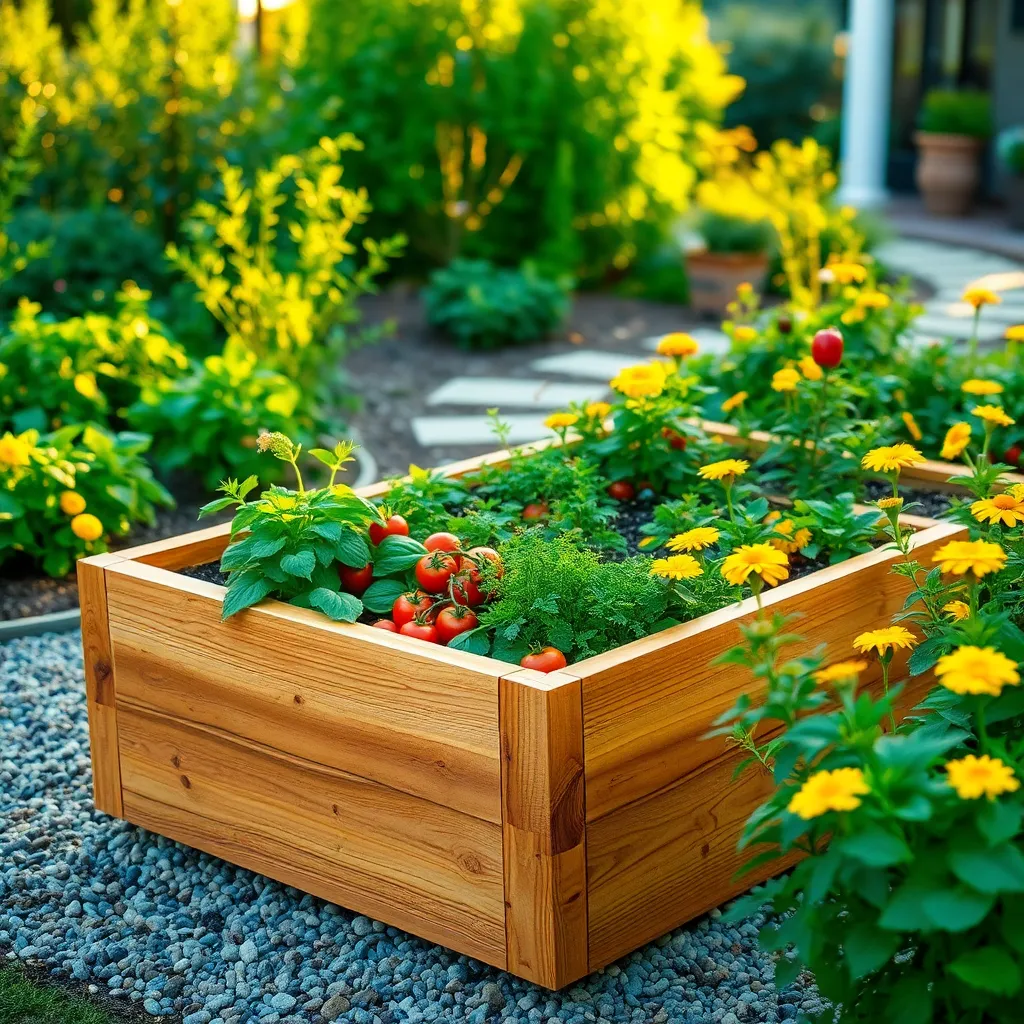
Cedar lumber is an excellent choice for building a raised garden bed due to its durability and natural rot resistance. This makes it a long-lasting option, especially in damp climates where other woods might quickly deteriorate.
When using cedar, it’s important to consider the soil type and drainage within your raised bed. Cedar’s rot-resistant properties will help protect the structure, but ensuring well-drained soil will further extend its lifespan.
For beginners, a simple mixture of one part compost, one part topsoil, and one part coarse sand can provide a good starting point for most plants. This blend offers essential nutrients while allowing excess water to drain, preventing root rot.
Experienced gardeners might experiment with adding specific amendments like peat moss or vermiculite to improve soil texture and moisture retention. These adjustments can help tailor the growing conditions to the specific needs of plants you’re cultivating.
- Install a layer of landscape fabric at the bottom of the bed to prevent weeds while allowing water to pass through.
- Consider the bed’s orientation to maximize sunlight exposure, especially if growing sun-loving vegetables like tomatoes or peppers.
Galvanized Steel Beds (Rust-Resistant Longevity)

Galvanized steel beds are an excellent choice for gardeners seeking longevity and durability in their raised garden beds. These beds are crafted to be rust-resistant, making them perfect for all-weather gardening conditions.
Beginner gardeners will appreciate that galvanized steel beds require minimal maintenance. Simply ensure proper drainage by using a well-draining soil mix, such as a blend of loam, sand, and organic matter.
Experienced gardeners will find that the reflective surface of galvanized steel can help moderate soil temperatures, providing an ideal environment for plant roots. This feature is especially beneficial for heat-sensitive crops like lettuce and spinach.
For optimal growth, water your plants in galvanized steel beds moderately, avoiding over-saturation. A good practice is to check the soil moisture by inserting your finger about an inch deep; if it feels dry, it’s time to water.
Weed Barrier Fabric (Effective Soil Protection)
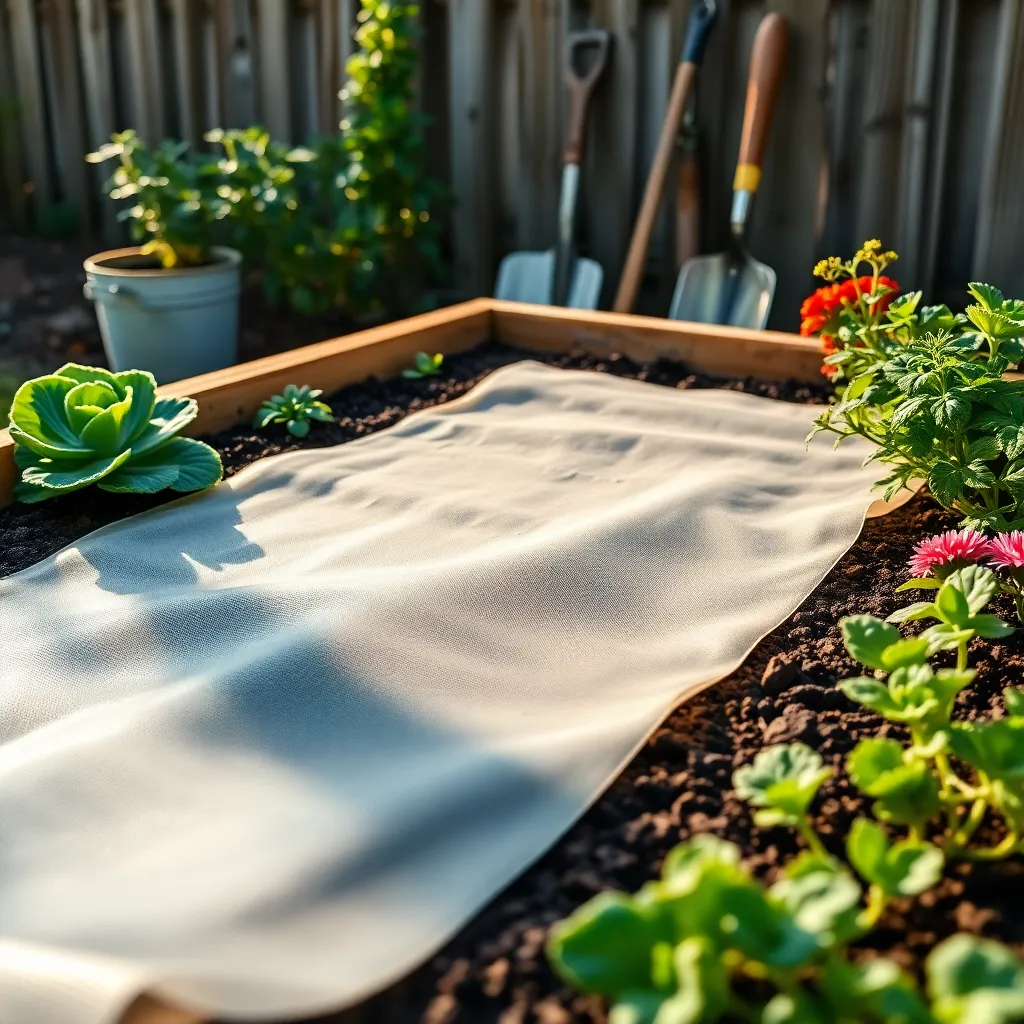
Weed barrier fabric is an essential tool for maintaining a healthy and productive raised garden bed. By preventing weeds from taking root, this fabric helps ensure that your plants receive the nutrients and sunlight they need to thrive.
To effectively use weed barrier fabric, lay it down after constructing the bed and before adding soil. Choose a high-quality, UV-resistant fabric to ensure longevity and maximum protection against invasive weeds.
When installing the fabric, cut it to fit the dimensions of your bed, allowing for a slight overlap at the seams to prevent gaps. Use landscape staples to secure the fabric in place, ensuring it remains taut and doesn’t shift over time.
For gardeners looking to plant directly into the fabric, make small X-shaped cuts where you intend to place your plants. This technique minimizes disruptions to the barrier while allowing for easy planting and continued weed control throughout the growing season.
Soil Mix for Raised Beds (Optimized Drainage and Fertility)
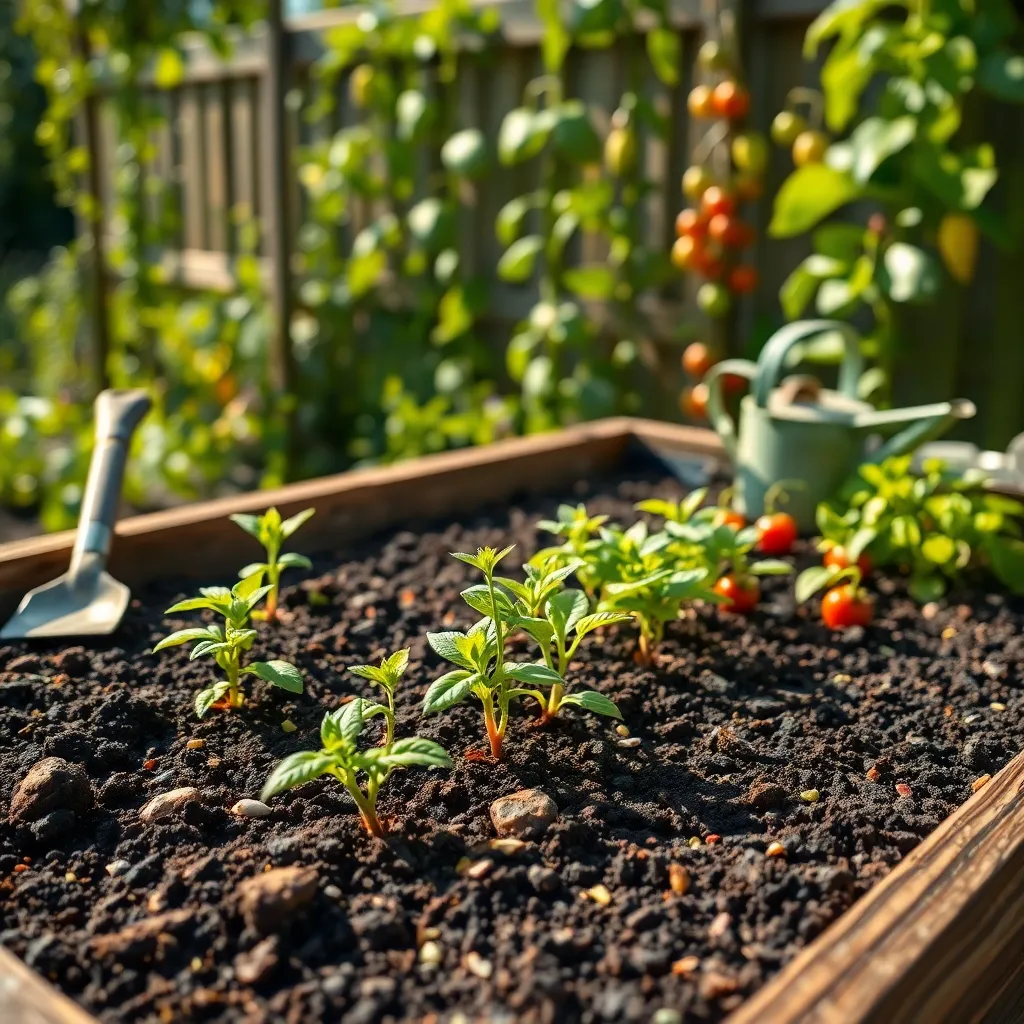
Creating an ideal soil mix for raised beds is essential for optimizing both drainage and fertility. Start with a blend of 60% topsoil, 30% compost, and 10% perlite or coarse sand to ensure good aeration and moisture retention.
Adding organic matter such as well-rotted manure or leaf mold can further enhance soil fertility. This will not only improve nutrient content but also help maintain a balanced pH, which is crucial for plant health.
To cater to specific plant needs, consider adjusting the mix. For instance, root vegetables like carrots prefer a sandy loam, while leafy greens thrive in a more nutrient-rich, loamy soil.
Regular soil testing can provide insight into nutrient deficiencies or pH imbalances. Amend the soil with targeted organic fertilizers like bone meal for phosphorus or kelp meal for potassium to address these issues.
Compost Bin (Nutrient-Rich Additive for Soil)
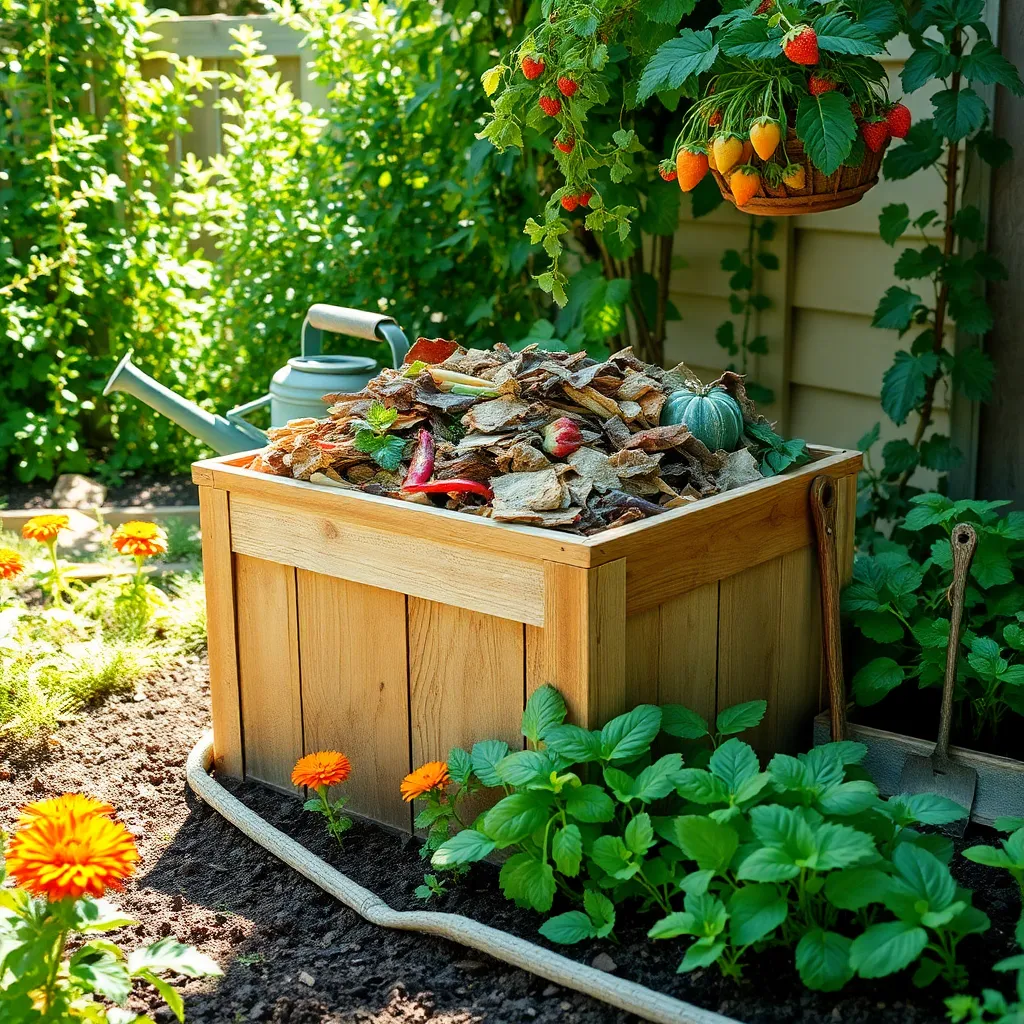
Incorporating a compost bin into your gardening routine can significantly enhance soil quality by adding essential nutrients. Composting is a sustainable way to recycle kitchen scraps and garden waste, transforming them into a valuable soil amendment that boosts plant growth.
Start your compost with a balance of green and brown materials; greens include vegetable scraps and grass clippings, while browns are made up of dried leaves and twigs. Ensure your compost pile stays moist but not soggy, and turn it regularly to provide aeration, which speeds up the decomposition process.
Once fully matured, compost should smell earthy and have a dark, crumbly texture, ready to be mixed into your garden soil. Apply a layer of compost about an inch thick over your raised beds at the start of each growing season to improve soil fertility and structure.
Advanced gardeners can experiment with compost tea, a liquid fertilizer made by steeping compost in water. Use this nutrient-rich solution to water your plants, providing an extra boost during their growing season and enhancing their resistance to pests and diseases.
Square Foot Gardening Method (Maximize Planting Space)
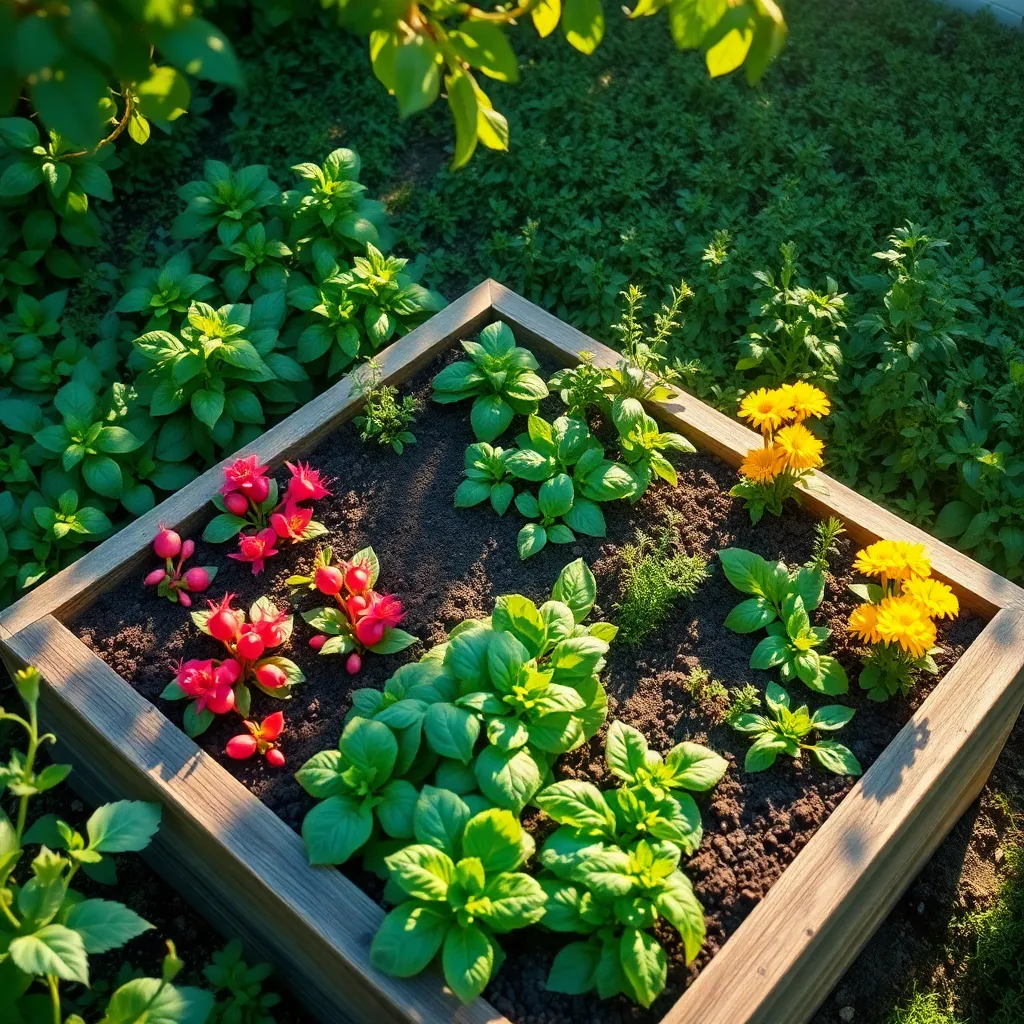
If you’re looking to get the most out of your raised garden bed, the Square Foot Gardening method is an excellent approach. This method allows you to maximize planting space efficiently by dividing your bed into a grid of one-foot squares, each tailored to different plants.
Begin by filling your raised bed with a high-quality soil mix, ideally one that’s light and drains well, such as a combination of one-third compost, one-third peat moss, and one-third vermiculite. This mix provides a nutrient-rich environment that supports healthy plant growth and reduces the need for frequent watering.
Once your bed is prepared, mark out a grid using string or wooden dividers to create individual square feet. In each square, you can plant a different crop, keeping in mind the specific needs of each plant, such as sunlight requirements and growth habits.
Consider planting high-yield crops like leafy greens, which can be planted densely, with up to nine plants per square foot. Root vegetables like carrots and radishes can also thrive with this method, as they require little space and can be planted in a staggered pattern to optimize growth.
For more advanced gardeners, try incorporating vertical elements such as trellises to further expand your growing space. Vining plants like tomatoes, cucumbers, and beans can be trained to grow upward, leaving more ground space for other crops.
Hoop House Kit (Extend Growing Season)
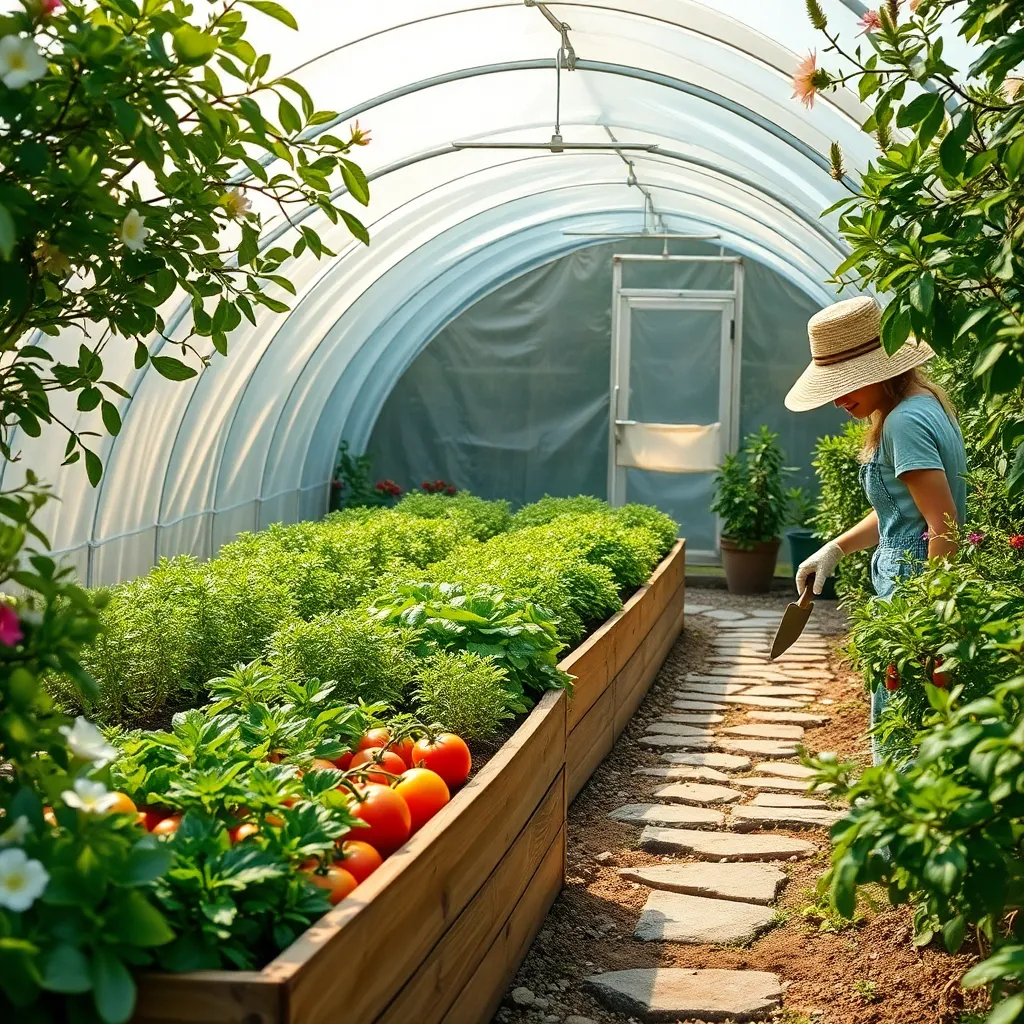
To extend your growing season effectively, consider using a hoop house kit. These kits offer a simple way to protect plants from early frosts and provide a warmer environment, allowing you to start planting earlier in spring and continue harvesting into late fall.
When selecting a hoop house kit, ensure it is the right size for your raised garden bed. Most kits come with flexible hoops and a durable plastic cover, which helps trap heat and moisture, creating a favorable microclimate for your plants.
Installing a hoop house is straightforward and can significantly boost your gardening productivity. Begin by positioning the hoops evenly across your garden bed and secure them firmly into the soil to withstand wind.
Cover the hoops with the provided plastic sheeting, ensuring it is tight to prevent wind damage. For best results, secure the edges of the plastic with weights or stakes to keep it in place, ensuring your plants remain protected.
Regularly monitor the temperature and humidity levels inside your hoop house to avoid overheating your plants. Ventilation is key; on warmer days, open the ends of the hoop house to allow for airflow and prevent fungal diseases.
For those looking to maximize efficiency, consider installing a simple irrigation system inside your hoop house. This ensures consistent watering and reduces the need for manual irrigation, allowing you to focus on other gardening tasks.
Mulching Techniques (Moisture Retention and Weed Control)

Mulching is an essential technique for maintaining a healthy raised garden bed. By applying a layer of organic material like straw, wood chips, or shredded leaves, you can significantly enhance moisture retention and suppress weeds.
To maximize moisture retention, apply a mulch layer that is at least 2-3 inches thick. This thickness helps to slow evaporation, keeping the soil consistently moist and reducing the need for frequent watering.
In addition to moisture retention, mulch acts as a natural weed barrier by blocking sunlight and preventing weed seeds from germinating. For best results, ensure the mulch is spread evenly and replenished periodically as it decomposes.
For more advanced gardeners, consider using a living mulch, such as low-growing ground covers, which can also add nutrients to the soil. Clover, for example, not only suppresses weeds but also fixes nitrogen, enriching the soil as it grows.
Self-Watering Reservoirs (Efficient Water Management)
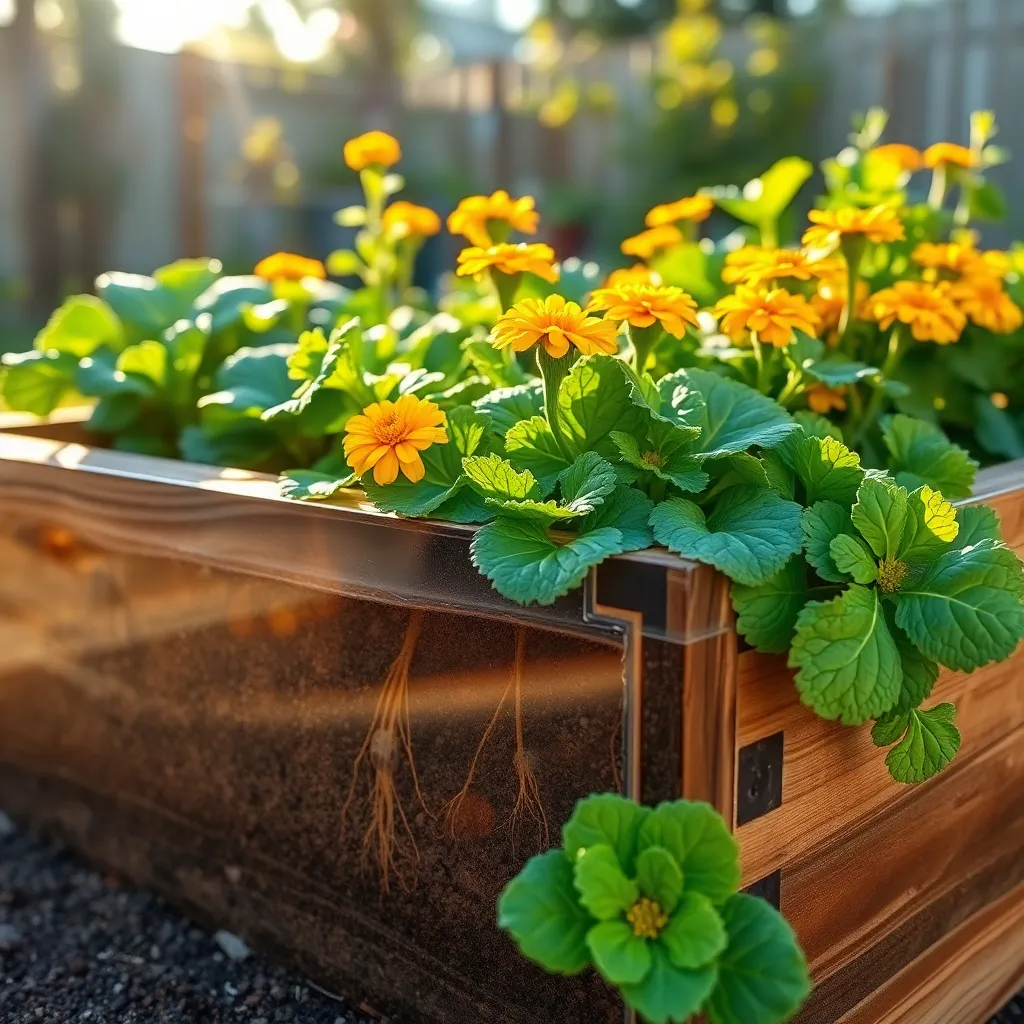
Incorporating self-watering reservoirs into your raised garden beds can significantly improve water efficiency and plant health. These systems allow plants to access water as needed, reducing the frequency of manual watering and helping to prevent overwatering.
A basic self-watering system involves placing a reservoir at the base of your garden bed. You can use materials like plastic tubs or buckets with a perforated platform to separate soil from water, ensuring roots can absorb moisture through capillary action.
For an effective self-watering setup, ensure the soil mix is light and well-draining, as this helps maintain proper moisture levels. A combination of peat moss, vermiculite, and perlite works well, offering excellent water retention while preventing root rot.
Regularly monitor the water level in your reservoir to ensure it remains filled, especially during hot weather when evaporation rates are higher. Adding a float valve can automate this process, ensuring water levels stay consistent without constant supervision.
Vertical Trellis (Space-Saving for Climbing Plants)
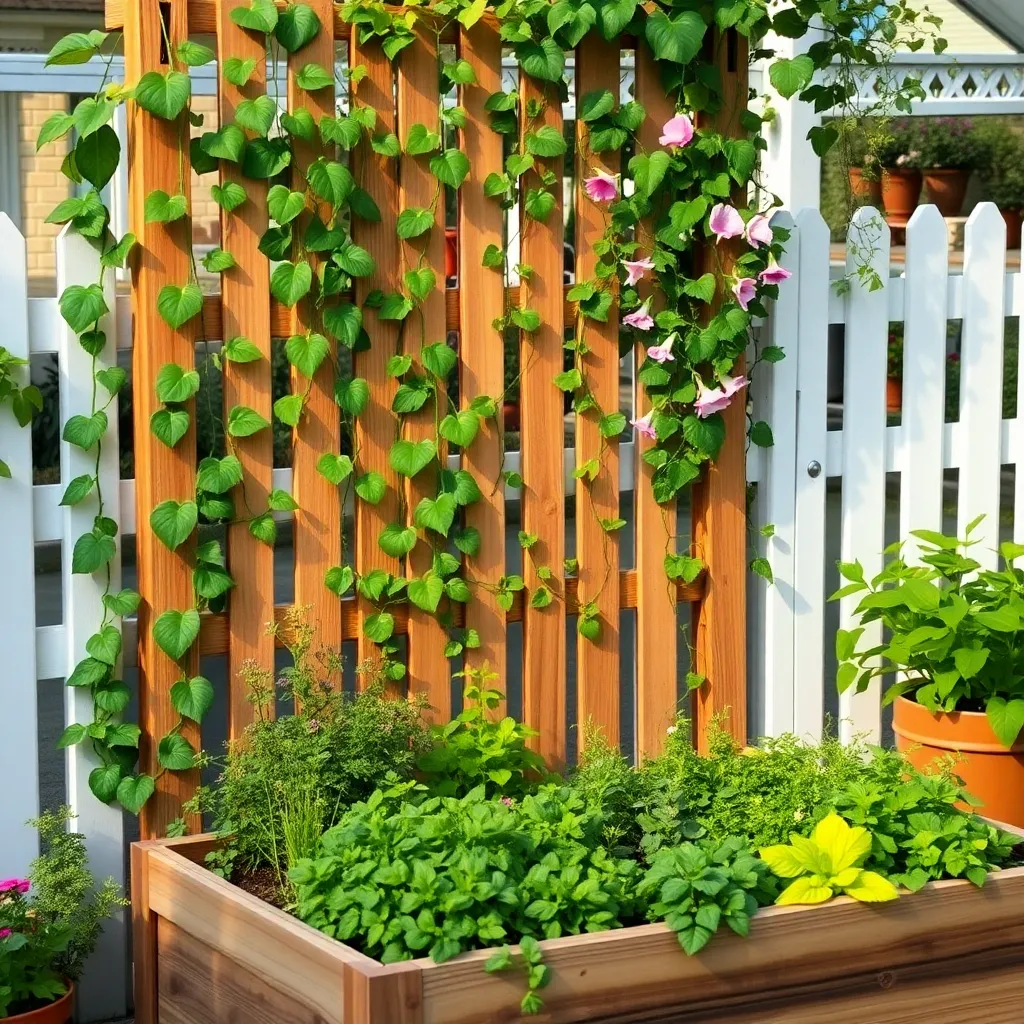
Vertical trellises are an excellent way to maximize limited space while supporting climbing plants. They are particularly useful for small gardens or urban spaces where horizontal room is scarce.
To construct a vertical trellis, choose materials such as wood, metal, or sturdy PVC pipes for durability. Ensure the structure is stable and securely anchored to withstand strong winds and the weight of mature plants.
Selecting the right plants is crucial for a successful vertical garden. Opt for vigorous climbers like cucumbers, peas, or beans, which can thrive in tight spaces and provide a bountiful harvest.
When planting, position the trellis on the north side of the garden bed to prevent it from casting shade on other plants. Regularly train your plants by gently tying the vines to the trellis with soft string or garden clips, encouraging upward growth.
Conclusion: Growing Success with These Plants
In “Top 10 Building A Raised Garden Bed,” we explored essential relationship concepts that mirror the nurturing process of cultivating a thriving garden. First, we discussed the importance of laying a strong foundation through trust and communication. We then highlighted the necessity of setting boundaries, much like defining garden borders, to create a safe and respectful space. Prioritizing quality time, akin to tending to your plants regularly, ensures growth and resilience. We emphasized the value of celebrating each other’s successes and watering your relationship with shared goals and dreams. Remember, just as gardens need sunlight, relationships flourish with positivity and encouragement. Lastly, we touched on the vital role of adaptability and patience in navigating life’s seasons together.
As an actionable next step, choose one concept to focus on this week—perhaps scheduling a date night or initiating a heartfelt conversation. To preserve these insights, save or bookmark this article as your go-to guide for nurturing a healthy relationship. As you invest time and care into your partnership, envision a future where your relationship blossoms into a source of joy and strength. Together, let’s cultivate relationships that not only endure but thrive.

